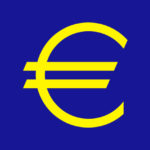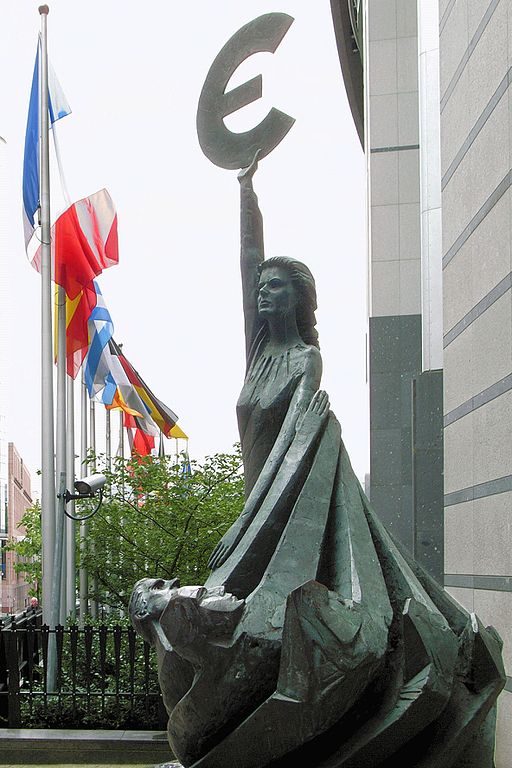UPDATED LINK TO: The final Proposal for a Regulation of the European Parliament and of the Council on the introduction and the import of cultural goods
On December 11, 2018, the EU approved severe limitations on imports of art from non-EU nations. The Proposal for a Regulation of the European Parliament and the Council of the European Union is a draft regulation approved after three years of discussions between the European Council, the European Commission, and the European Parliament. The new regulation was rushed to a final vote by the departing Austrian presidency of the European Council. The regulations are portrayed as necessary to halt a supposed trade by terrorists in illegal antiquities – a form of terrorist financing that the EU’s own analysis failed to prove.
The new regulation will be effective after an EU-wide electronic system for submission of forms and documents is established, approximately six years from adoption of the regulation. According to the draft regulation, implementing acts must be adopted within two years, and an electronic system must be operational within four years of adoption of the implementing acts.
Art dealer organizations took lead in challenging false premises for new regulation.
The International Association of Dealers in Ancient Art (IADAA), Antiquities Dealers’ Association, and CINOA have closely followed the process throughout, providing critical analysis, factual background on the art trade and constructive assistance to anyone at the European Union organizations who would listen. Thanks to the diligence and persistence of these arts organizations and a thoughtful response by Daniel Dalton, a British Member of the European Parliament and rapporteur on the proposals, some of the worst effects of the regulations have been mitigated.

Flag of Euro, By Todofai, via Wikimedia Commons
When implemented, the regulation is likely to cripple European art markets.
The practical consequences can only be estimated at this time, because the draft regulations are not clear about what documentation will suffice for importation and some objects – coins and seals, for example – appear to fit into different categories.
Realistically, it seems clear that documentation requirements cannot be met by a majority of the antique and ancient objects in circulation today. In the case of antiquities, documented proof of either legal export from the source country or pre-1972 export will be required. This documentation rarely existed or the records have been discarded. Export permits, in any case, did not include the type of detailed documentation sought under the draft proposal.
This will prevent import of most antiquities. Many types of antiques over 200 years of age will require only a sworn affidavit attesting to legal export from the source country. However, since most antiques have passed from hand to hand for decades, a current owner may have no idea whether the original export was lawful, and therefore have little basis for making a sworn affidavit.
Notes on the Draft Proposal for a Regulation of the European Parliament and of the Council on the Introduction and the Import of Cultural Goods (COM(2017)0375 – 2017/0158(COD)
The final text from Column four is: Draft Compromise Text, Proposal for a REGULATION OF THE EUROPEAN PARLIAMENT AND OF THE COUNCIL on the introduction and the import of cultural goods.
The definitions of cultural goods is based upon the same list of items described as cultural property in the 1970 UNESCO Convention on the Means of prohibiting and preventing the Illicit Import, Export and Transfer of Ownership of Cultural Property signed November 14, 1970 (effective April 24, 1972) and the UNIDROIT Convention on Stolen or Illegally Exported Cultural Objects, signed on June 24, 1995. This list of items covered by either Part B or Part C of the Annex to the draft Regulations is comprehensive, including not only all handcrafted artworks, flora and fauna specimens, books and documents, but also bulk manufactured items such as prints, coins and stamps.
Part B. Cultural goods covered by Article 4
| Categories of cultural goods according to Part A | Combined Nomenclature (CN) Chapter, Heading or Subheading | Minimum age threshold | Minimum financial threshold (customs value) | |
| (c) products of archaeological excavations, including regular or clandestine, or of archaeological discoveries on land or underwater; | ex 9705; ex 9706 | More than 250 years old | No threshold | |
| (d) elements of artistic or historical monuments or archaeological sites which have been dismembered[1]; | ex 9705; ex 9706 | More than 250 years old | No threshold |
Draft rules for import of Article 4 goods:
The application for an import license must be accompanied by any supporting documents and information providing evidence that the cultural goods in question have been exported from the country where they were created or discovered in accordance with its laws and regulations or providing evidence of the absence of such laws and regulations at the time they were taken out of its territory.
In cases where the country where the cultural goods were created or discovered
- cannot be reliably determined or
- the cultural goods left the country where they were created or discovered before 24 April 1972,
then the application may be accompanied instead by any supporting documents and information providing evidence that the cultural goods in question have been exported in accordance with the laws and regulations of the last country where they were located for a period of more than 5 years and for purposes other than temporary use, transit, export or transhipment.
The regulation states that evidence that the cultural goods in question have been exported “in accordance with the laws and regulations” shall be provided by export certificates or export licenses insofar as the the country in question has “established such documents for the export of cultural heritage.”
Part C. Cultural goods covered by Article 5
| Categories of cultural goods according to Part A | Combined Nomenclature (CN) Chapter, Heading or Subheading | Minimum age threshold | Minimum financial threshold (customs value) | |
| (a) Rare collections and specimens of fauna, flora, minerals and anatomy, and objects of palaeontological interest; | ex 9705 | More than 200 years old | 18.000 euros or more per item | |
| (b) property relating to history, including the history of science and technology and military and social history, to the life of national leaders, thinkers, scientists and artist and to events of national importance; | ex 9705 | More than 200 years old | 18.000 euros or more per item | |
| (e) antiquities, such as inscriptions, coins and engraved seals; | ex 9706 | More than 200 years old | 18.000 euros or more per item | |
| (f) objects of ethnological interest; | ex 9705 | More than 200 years old | 18.000 euros or more per item | |
| (g) objects of artistic interest, such as: | ||||
| (i) pictures, paintings and drawings produced entirely by hand on any support and in any material (excluding industrial designs and manufactured articles decorated by hand); | ex 9701 | More than 200 years old | 18.000 euros or more per item | |
| (ii) original works of statuary art and sculpture in any material; | ex 9703 | More than 200 years old | 18.000 euros or more per item | |
| (iii) original engravings, prints and lithographs; | ex 9702; | More than 200 years old | 18.000 euros or more per item | |
| (iv) original artistic assemblages and montages in any material; | ex 9701 | More than 200 years old | 18.000 euros or more per item | |
| (h) rare manuscripts and incunabula | ex 9702; ex 9706 | More than 200 years old | 18.000 euros or more per item | |
| (i) old books, documents and publications of special interest (historical, artistic, scientific, literary, etc.) singly or in collections | ex 9705; ex 9706 | More than 200 years old | 18.000 euros or more per item |
Draft Rules for Article 5 goods are easier to satisfy in theory. The import of the cultural goods referred to in Part C of the Annex is subject to the submission of an importer statement. The statement must consist of:
a declaration signed by the holder of the goods that the goods have been exported from the country where they were created or discovered in accordance with its laws and regulations at the time they were taken out of its territory.
However, in cases where:
“the country where the cultural goods were created or discovered cannot be reliably determined or the cultural goods left the country where they were created or discovered before 24 April 1972, the declaration may instead be that the cultural goods in question have been exported in accordance with the laws and regulations of the last country where they were located for a period of more than 5 years and for purposes other than temporary use, transit, re-export or transhipment.”
An issue for both Article 4 and Article 5 goods, is how an importer can make a declaration regarding the original export (as much as 50 years ago) if there is no documentation remaining and the date of original export is not known.
Other regulations apply to cultural goods made in EU countries.
The new regulation does not apply to “cultural goods that were created or discovered in the customs territory of the European Union.” (Directive 2014/60/EU of the Parliament and the European Council regulation (EC) No 116/2009 on the return of objects unlawfully removed from one EU state into another already cover this category of objects. (Preamble section (4))) Goods in transit are also not covered by the new regulations.
Temporary import allowed for art fairs – but import license must be obtained before delivery of sold goods.
The lengthy customs entry process required by the regulation for import is likely to make participation by international dealers in art fairs such as TEFAF Maastricht, Parcours de Mondes, and Paris Biennale untenable. A temporary import permit is allowed for fairs, but an equally burdensome permit process must be completed before the seller releases the object to a purchaser – and few buyers will be interested in purchasing objects with an uncertain, temporary legal status.

Plaque outside the Parliament with its name rendered in all member country official languages.
EU Commissioned a study to determine size of illicit trade but did not wait for its results
According to Vincent Geerling, president of the International Association of Dealers in Ancient Art, of the three approaches to regulation, the European Parliament’s proposal ended up being the most unrealistic, because it was based upon certain Members unsubstantiated but unshakeable beliefs that there is a massive illicit market in antiquities that supports terrorist activities.
Throughout the lengthy proceeding of drafting the regulations, serious questions were raised about how much illicit trade actually exists. The obvious need for better data to justify implementing the proposed regulations resulted in the selection of Neil Brodie, Donna Yates, and the economic research and consulting company Ecorys in late 2017 to complete a market study by June 2019.
This “Study on improving knowledge about illicit trade in cultural goods in the EU, and the new technologies available to combat it” could have provided a more solid basis for determining the usefulness of a regulatory scheme. Unfortunately, the EU organizations did not wait for the results of the study to implement the regulation. This raises the question, if the study concludes that the facts are very different from those on which the regulation was based, is it still appropriate to implement them?
Burden of proof is on the importer, not Customs authorities.
A chief consequence of the regulation is to reverse the burden of proof from government, and to place that burden on the importer. Instead of customs having to show that an item is illegal to import, the importer must show proof of lawful export in the past, either by presenting permits for export from the source country or, if a single possible source country cannot be determined, by demonstrating that an object has been lawfully exported from a third country where the object has resided for at least five years.
Harmonization of Customs regulations across the EU and a new digital system to implement the regulation will be necessary.
Implementing the regulation will require multiple steps. Customs regulations for antiques and antiquities for each EU nation will need to be harmonized so the regulation is applied consistently throughout the EU. (The current lack of consistency was cited as a reason for the new regulation.) EU officials have acknowledged that regulations could only be implemented through an online application system. Therefore the import licensing requirement is expected to be deferred until 2024 or even 2026 to enable harmonization of customs laws across the EU and for the development of the online system.
Additional provisions will require time and detailed preparation.
- Licenses will be issued by the importing country after the authorities examine the evidence submitted by the importer that the cultural good has been exported legally from the source/exporting country.
- Descriptions should meet an ‘Object ID’ standard: an international standard developed for the identification and registration of cultural goods which provides the minimum necessary information to identify the object, including a photograph.
- Customs agents and other national authorities could hold cultural goods for up to six months to examine the claims and decide whether to grant an import license.
Problems likely to arise in obtaining import licenses.
Vincent Geerling noted that IADAA has consistently “addressed topics including … value thresholds for qualifying works; delays in processing of licence applications and importer statements; and concerns over possible enforcement prior to a compulsory electronic system being fully operational…” and the lack of “other detail necessary for market professionals to ensure compliance without serious and unnecessary disruption.”
On receipt of an application for an import license, the EU “competent authorities” must verify that all required documentation for import is complete, and request additional documentation within 21 days after receipt if needed. The authorities would then be required to issue or reject a license within 90 days of receipt of a complete application.

European Parliament, By Diliff, Wikimedia Commons
The “competent authority shall reject the application where it has information or reasonable grounds to believe that the goods were removed from the territory of the country where the cultural goods were created or discovered in breach of its laws and regulations… where the evidence required in paragraph 4 is not provided… where it has information or reasonable grounds to believe that the holder of the goods did not acquire them lawfully…[and] where the competent authority is informed that there are pending claims for return by the authorities of the country where the cultural goods were created or discovered.”
In practical terms, the regulations could halt all imports of antiques and antiquities from countries that have a domestic law requiring “state permission” for export, but no history of ever issuing official export permits. Export permits have been extremely difficult, if not impossible, to obtain from almost every country that is a source for ancient and ethnographic art – including the nations of South and East Asia, Eastern Europe and the former Soviet bloc, Central Asia, South and Central America, Sub-Saharan and North Africa, and the Near East and the eastern Mediterranean.
To take the example of Egyptian antiquities, which are probably the most popular commodity in the antiquities market: Egypt licensed antiquities dealers and granted permits for export until 1983. The problem for importers will be showing proof of lawful export of these items. Even in the rare cases in which the original documentation has been retained for 50 years or more, Egyptian export permits generally did not describe individual objects, instead listing only the number of cases for tax purposes, so correlating an object to an export permit is virtually impossible.
How does the UNESCO 1970 Convention on the Means of Prohibiting and Preventing the Illicit Import, Export and Transfer of Ownership of Cultural Property fit in?
Many nations that have signed the 1970 UNESCO convention over the 48 years since it was first promulgated had previously passed domestic laws prohibiting the export of their own cultural property. Most art-source nations passed comprehensive laws, essentially nationalizing all cultural property over a certain age (often 50-100 years old) and allowed export permits only for temporary exhibition or scientific study.
Few of the signatory nations previously recognized rights to reclaim art and artifacts from each other. Nor, until several decades passed, had many nations that already had domestic laws against export actually made serious efforts to enforce them.
In consequence, like other international agreements on culture, for example, those granting rights to culture for indigenous peoples, the UNESCO convention on cultural property remained largely aspirational in character. Whatever pre-convention regulatory system existing in each country got a psychological and political boost, but certain elements of UNESCO 1970, such as the notion that important artworks should be protected, that each country should have a domestic system for other countries to utilize in order to seek return of their artworks, or that an export permitting system of some kind ought to allow art to circulate globally, were largely ignored. Many countries could simply state the UNESCO 1970 was “self-executing” and then simply ignore it. However, in practice the conventions was not self-executing, and in fact, many nations signed UNESCO long after its promulgation in 1972, and did absolutely nothing to actually enforce it, or to establish functional permitting systems of any kind.
As many peoples have become more conscious of their cultural interests, and politicians more aware of the political usefulness of identity politics, the 1970 UNESCO convention has assumed far greater political and social importance with every passing year since 2000. (To give just one comparison, hundreds of news articles now reference it each month in world news, as compared to just a few each year in the 1970s and 1980s.) Nonetheless, in today’s political discussions about the effect of the convention, it is generally assumed that it had a consciousness-raising effect or that it legally impacted the trade in ethnographic art and antiquities starting in 1970, when in fact, it had almost no effect until the mid 1990s, and a significant impact only in the 2000s.
Almost all of the antiquities and ethnographic objects that came into global circulation from 1970 until at least 2000 were correctly identified by source country of origin, age, and value, openly declared (usually on commercial invoices), and legally entered the market countries under supervision of the customs authorities. Only a tiny fraction (those from other consumer nations or Japan) were accompanied by export permits. European and U.S. customs authorities were concerned only for the accuracy of the declarations on entry. Export permits were not required or even asked for, other than country of origin forms that conferred a special tax or duty status.
Thus, there is a huge difference between how the EU and other political entities view the art trade and its history over the last 50 years, and the actualities of the market.
Orphan objects and similarities to the AAMD “1970 rule.”
The EU regulation’s assumption that there should be proof of export prior to 1972 to establish the legal status of an object is an example of the common misapprehensions about the impact of the 1970 UNESCO convention on global art circulation. The EU regulation appears to assume that unless an item has an export permit, it was unlawfully exported. The classes of objects subject to restriction from entry into the EU under the new agreement are similar to the classes of objects subject to voluntary exclusion from acquisition and loans to U.S. museums under guidelines first set in 2008 by the Association of Art Museum Directors (AAMD), an organization composed of directors of major museums in the US, Canada, and Mexico.
The AAMD guidelines came to be known as the “1970 Rule” because they excluded consideration of objects for acquisition if they were imported into the U.S. after the 1970 UNESCO Convention, and did not have proof of lawful export from their source countries. Regrettably, the AAMD instituted its guidelines without due consideration for the consequences. The result in the U.S. has been to create a body of objects, known as “orphan objects” which are “museum-worthy” in their quality, but cannot find a home in museums because they lack documentation stretching back almost 50 years. Their numbers are currently estimated to be in the hundreds of thousands.
The AAMD example raises the question of what will happen to objects with no clear date of exportation before 1972 under the EU regulations if these objects can no longer circulate in a primary global market.
Details: How negotiations proceeded.

European Commission flags in Brussels., 2005. Wikimedia Commons.
The International Association of Dealers in Ancient Art (IADAA) took the lead in responding to EU proposals, presenting data to supplement the EU’s inadequate research into the facts of the art market. The IADAA pointed out the lack of evidence for terrorist financing in the art market, and attempted to educate and inform EU representatives and staff on how the market has operated over the last 50 years.
These efforts were headed by IADAA President Vincent Geerling and specialist consultant Ivan Macquisten. A number of other UK, European and international organizations and trade leaders took a very active part, including Joanna Van der Lande, Chairman of the Antiquities Dealers Association (ADA), Mark Dodgson of the British Antique Dealers’ Association, and Erika Bochereau and Clinton Howell of the Confédération Internationale des Négociants en OEuvres d’Art (CINOA), which represents 19 leading international art dealer associations.
Negotiations on EU policy are described as a Trilogue. They take place within three primary EU institutions: the European Council, the European Commission, and the European Parliament. The presidency of the European Council is held by a country, not an individual, but its minister is the principal representative of the EU in making international policy.
Daniel Dalton, a rapporteur on the proposals, consistently argued for a workable system that can be efficiently and effectively implemented by Customs authorities. Key elements set forth by Dalton were that only the goods at highest risk of illicit trafficking should require an import license, and that import licenses should be obtained through an electronic system for declarations and granting of licenses. “We have to accept that prioritization will be necessary for this proposal to work efficiently and effectively for everyone. As I said earlier, if Customs authorities have an impossible task, we are just going to make this problem worse,” he said.
Dalton has stated in response to demands for far broader restrictions that thresholds of age or value are not loopholes, they are necessary and important elements to ensure that if the goal of EU regulations is to halt the possibility of terrorist financing, only goods that could meet that criteria should be restricted.
Members of the art trade had been heartened by Dalton’s recognition of the lack of substantive information on the illicit trade and the conclusions drawn from that little existing data. The EU’s arguments justifying broad restrictions on all antiquities were based largely on unsubstantiated press reports about illicit sales from war zones being to European markets. These reports have been questioned not only by police analyses but also by a report commissioned from Deloitte for the Parliament itself. Unusual for an EU proposal, there was significant disagreement between the rapporteurs, whose task is to investigate the facts supporting a proposal.
It appears that notwithstanding the arguments for a practicable system, these goals were overcome by a more general desire to halt the majority of the trade in antiquities originating from all nations.
In early August 2018, the Art Newspaper obtained a leaked document dated June 28 showing that the European Parliament was backing off of commitments “to find more workable solutions and utterly ignores the specialist advice given.” According to Erika Bochereau, the secretary general of CINOA, the June 2018 proposal required pinpointing the date of export (rarely known) and one “source country” for each item (often impossible, as ancient civilizations were not limited to present-day political boundaries), “which means it is equally impossible to state whether such an export was conducted according to laws that existed at the time.” The proposal also set neither age nor value thresholds.
There was strong opposition to any compromise from certain Members of the European Parliament designated to investigate the proposals. Geerling of IADAA said in June 2018 that, “Those who oppose the trade are prepared to insist on unworkable measures from a purely idealistic standpoint…”
It became clear that other EU Parliament Members had a far broader agenda when, after a vote to move the European Parliament proposal forward on August 27, the co-author of the report on imports of cultural goods, Alessia Mosca a second rapporteur and Member of the European Parliament, said: “Today’s vote is a big success for us Socialists and Democrats…The message we sent today is clear: Europe can allow neither the destruction of archaeological sites and artefacts, nor the illicit trade thereof. Illegal trade of arts is one of the most lucrative businesses next to those of drugs, weapons and counterfeit goods. It encourages organised crime, terrorist financing and money laundering. We must put an end to this business model! The S&D Group is committed to fighting to protect cultural heritage and promoting a value-based trade policy.”
Briefly, a more balanced approach emerged in September, with a “Revised Presidency Compromise Text” from the Council of the European Union, but this was later set aside.
In November, IADAA joined with the ADA and CINOA in a final effort to point out the problems with each of the proposals and to identify the areas that were most difficult – or impossible – for the legitimate trade to comply with, and which would do the most harm to the art industry. Regrettably, many of these legitimate concerns were overridden in the Trilogue draft of December 2018, as described above.
A further wrinkle in import/export regulations – what about export from the UK is there is, and if there is not a Brexit deal?
A statement from the UK Department of Digital, Culture, Media, and Sport issued October 12, 2018 sets forth the status of licensing requirements before and after March 29, 2019, and where to obtain guidance on the laws and regulations to export from the EU to the UK and to other countries. This informative webpage also notes that “At present there are no licensing requirements for objects of cultural interest for import into the UK or EU.”
[1] Liturgical icons and statues, even free-standing, are to be considered as cultural goods belonging to this category.
Note: this article has been updated to correct a typographic error ascribing the date on which Egypt ceased to issue licenses for legal sale of antiquities to 1972. The correct date is 1983.
 The Paul-Henri Spaak Building, (Brussels office of the European Parliament). European_Parliament_Buildings_(2008)-01.jpg: Steve Cadman from London, U.K.derivative work: Parzi, via Wikimedia Commons.
The Paul-Henri Spaak Building, (Brussels office of the European Parliament). European_Parliament_Buildings_(2008)-01.jpg: Steve Cadman from London, U.K.derivative work: Parzi, via Wikimedia Commons. 

